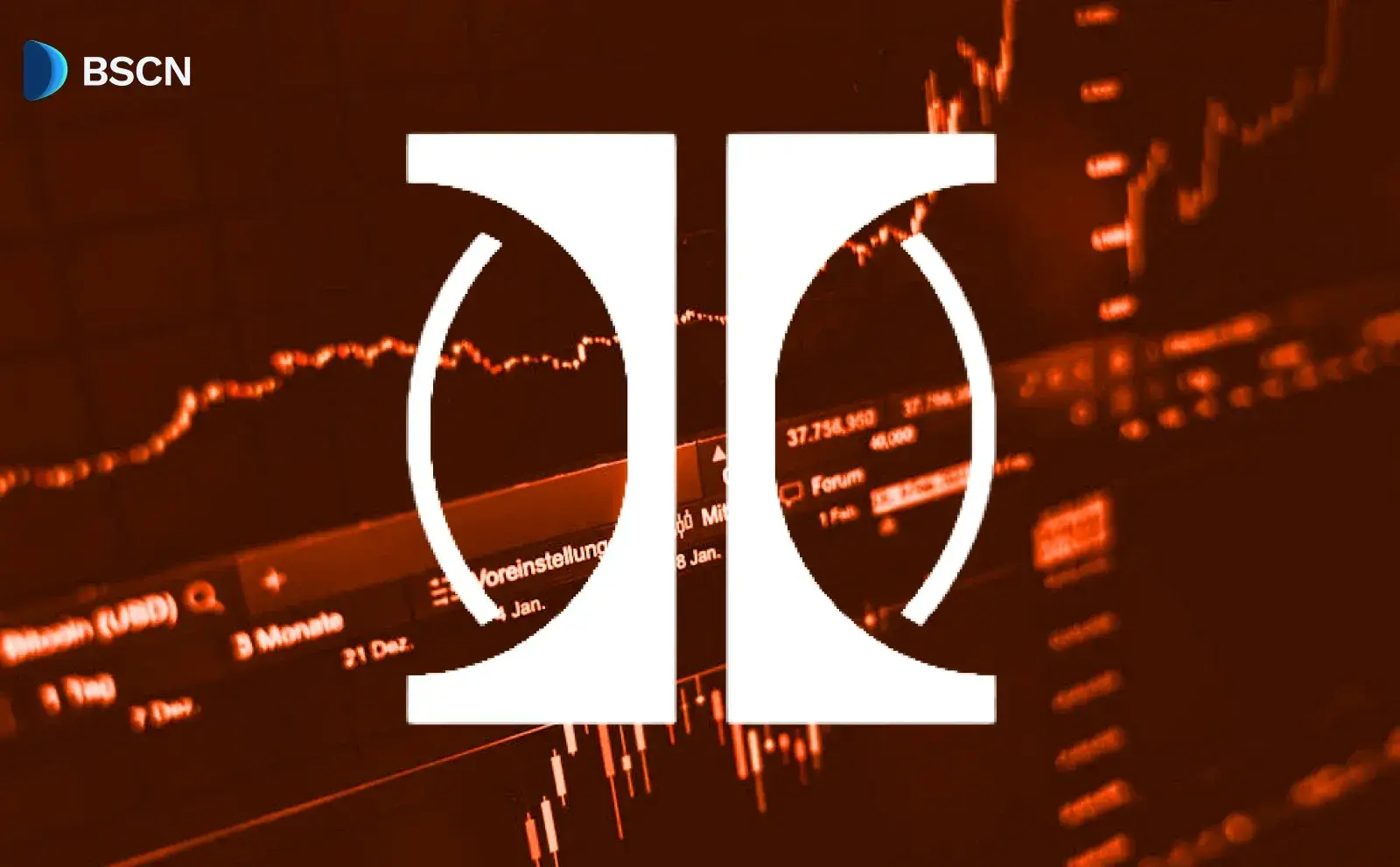Deepdive
(Advertisement)
Bull Markets in Crypto: How to Spot and Trade Them

Learn how to identify crypto bull markets, understand market cycles, and develop trading strategies for sustained price uptrends in Bitcoin and altcoins.
Crypto Rich
March 4, 2021
(Advertisement)
Table of Contents
Last revision: September 22, 2025
A crypto bull market is a sustained period where prices rise by 20% or more from recent lows, driven by increasing investor confidence and buying pressure. Recent cycles have been driven primarily by institutional adoption and regulatory clarity, creating dynamics different from those of earlier retail-focused periods.
Since Bitcoin's creation, the crypto market has experienced at least three major bull runs. Each cycle brings new participants, technologies, and market forces that reshape how uptrends develop and end.
What Causes Bull Markets in Cryptocurrency?
Bull markets don't happen randomly. Instead, several factors align to create sustained upward price movements across the crypto sector.
Crypto cycles follow patterns tied to Bitcoin's halving events. These occur approximately every four years. The halvings reduce Bitcoin's supply growth rate, creating scarcity that has historically preceded major price increases. However, external factors like macroeconomic shifts or regulatory changes can disrupt these patterns.
The approval of Bitcoin ETFs brought over $10 billion in new capital within the first quarter of launch. This demonstrates how institutional products can drive sustained buying pressure - something retail-driven rallies often lack.
Regulatory Clarity Drives Confidence
Clear regulations remove uncertainty that previously kept institutional investors away. When major economies provide regulatory frameworks, crypto assets gain legitimacy and attract new capital flows.
The European Union's Markets in Crypto-Assets (MiCA) regulation exemplifies this trend. Similar frameworks in other jurisdictions have significantly reduced regulatory risk compared to previous cycles.
Network Effects and Adoption
Bull markets coincide with increased real-world usage of blockchain networks. Higher transaction volumes signal this growth. So do more active wallets and growing developer activity - all indicating fundamental expansion beyond speculative trading.
DeFi total value locked (TVL) often grows significantly during bull markets, though with considerable volatility. This indicates actual utility rather than pure speculation.
How Do You Identify a Bull Market Early?
Recognizing bull markets before they become obvious helps traders position themselves advantageously. Several indicators provide early signals - if you know where to look.
On-chain metrics offer the clearest early warnings. When long-term holders stop selling and exchange balances decrease, supply moves into stronger hands. This shift happens months before mainstream recognition.
The Network Value to Transactions (NVT) ratio helps distinguish sustainable growth from speculative bubbles. Lower NVT values during price increases suggest transactions actually support the valuation.
Technical Indicators for Bull Market Confirmation
Price breaking above key resistance levels with high volume confirms bull market beginnings. Bitcoin leads these breakouts most of the time, followed by major altcoins like Ethereum.
Moving average crossovers provide systematic entry signals. When short-term averages cross above long-term ones with expanding volume, uptrends get confirmed. Traders use this strategy by buying when prices stay above key moving averages. They sell when prices break below.
Market Sentiment and Fear-Greed Index
The Crypto Fear and Greed Index measures market sentiment on a scale of 0 to 100. Bull markets often begin when this index shows "extreme fear" - below 25. They develop as sentiment moves toward "greed" levels above 75.
Social media sentiment analysis tools track discussion volume and positive-negative ratios across platforms. Rising positive sentiment often precedes major price movements.
What Are the Phases of a Crypto Bull Market?
Understanding bull market phases helps traders adjust strategies as conditions change. Each phase has distinct characteristics and optimal approaches.
- Phase 1: Stealth Accumulation - Smart money accumulates positions while prices remain low. Exchange reserves decline as coins move to cold storage. Media coverage stays minimal. Sentiment remains pessimistic from the previous bear market.
- Phase 2: Institutional Recognition - Major companies announce crypto investments or integrations. Regulatory news turns positive. Traditional finance firms launch crypto products. Price increases accelerate, but volatility remains manageable.
- Phase 3: Retail FOMO - Mainstream media coverage intensifies. Retail investors return to crypto markets in waves. New projects launch frequently. Price movements become increasingly volatile with sharp daily swings.
- Phase 4: Euphoria and Peak - Everyone talks about crypto. New investors enter daily. Price predictions become unrealistic. Market sentiment reaches extreme greed levels before sharp corrections begin.
Duration and Timing Patterns
Historical data shows crypto bull markets typically last 8-18 months from start to peak, though this varies depending on how start and end points are defined. The stealth phase runs 3-6 months. Euphoria phases compress into 2-4 months of intense activity.
Bear markets between bull runs usually last 12-24 months. These provide accumulation opportunities for the next cycle.

Which Trading Strategies Work Best in Bull Markets?
Successful bull market trading requires different approaches than bear market strategies. The key is matching strategy to market phase and personal risk tolerance.
Dollar-cost averaging (DCA) works well during early phases. Systematic purchases smooth out volatility while building positions in quality projects. This happens before major price appreciation kicks in.
Trend Following Approaches
Breakout trading captures momentum when prices break above resistance levels. This approach works best during phase 2 and 3 of bull markets when technical levels matter most.
Profit-Taking Strategies
Systematic profit-taking prevents giving back gains during inevitable corrections. Many successful traders sell predetermined percentages of holdings at specific price targets.
Trailing stops help capture more upside while protecting against sudden reversals. Setting stops 15-25% below recent highs balances profit protection with continued trend participation.
What Sectors Perform Best During Bull Markets?
Different crypto sectors outperform during different phases. Understanding sector rotation helps optimize portfolio allocation.
Large-cap cryptocurrencies like Bitcoin often gain first, especially during early phases when institutional buyers focus on established assets. Market dominance patterns typically show Bitcoin strength before altcoins gain momentum.
Layer-1 blockchains like Ethereum, Solana, BNB Chain, and newer platforms often outperform during infrastructure-focused phases. These networks benefit from increased developer activity and application deployment.
DeFi and Application Tokens
Decentralized finance protocols see explosive growth during bull market middle phases. TVL increases drive token prices as protocols earn more fees and attract more users.
Gaming and NFT-related tokens perform well during retail-heavy phases when new users explore crypto beyond basic trading.
Emerging Narratives
Each bull market creates new narratives that capture investor attention. Previous cycles featured ICOs, DeFi summer, and NFTs. Recent examples include artificial intelligence integration with blockchain.
Identifying emerging narratives early provides significant opportunities, but requires careful fundamental analysis to separate legitimate projects from speculation.
How Do You Manage Risk During Bull Markets?
Bull markets create unique risks that catch many traders unprepared. Success requires disciplined approaches despite euphoric market conditions.
Position sizing and risk management become critical as account values and volatility increase rapidly. Many traders risk excessive portions of their portfolio on individual trades after early wins create overconfidence. Rules that work in traditional markets often prove inadequate for crypto's extreme price swings.
Leverage amplifies both gains and losses exponentially. Even small corrections can liquidate highly leveraged positions during volatile periods.
Diversification Strategies
Spreading investments across multiple sectors and market cap ranges reduces concentration risk. However, crypto correlations increase during stress periods, limiting diversification benefits.
Maintaining some exposure to traditional assets provides portfolio stability when crypto markets correct sharply.
Exit Planning
Having predetermined exit strategies prevents emotional decision-making during periods of high volatility. This includes profit-taking levels, stop-loss placements, and portfolio rebalancing rules.
Tax planning becomes crucial as gains accumulate. Understanding holding period requirements and tax-loss harvesting opportunities optimizes after-tax returns.
What Signals Indicate Bull Market Endings?
Recognizing bull market tops helps preserve gains and prepare for the next accumulation phase. Several indicators typically coincide with market peaks.
Extreme sentiment readings often mark tops. When the Fear and Greed Index stays above 80 for extended periods, corrections usually follow within weeks.
Parabolic price movements that disconnect from fundamental metrics signal unsustainable conditions. When prices rise faster than network activity or adoption metrics, corrections become likely.
Fundamental Divergences
When prices rise but network activity stagnates or declines, it suggests speculation rather than utility drives valuations. This divergence typically resolves through price corrections.
Declining developer activity and reduced protocol innovation often precede major market tops by several months.
Market Structure Changes
Increasing derivatives activity relative to spot trading suggests speculative excess. High funding rates and options skew toward calls indicate overcrowded positions.
New project launch frequency and quality decline during late bull market phases as teams rush to capitalize on favorable conditions.
What Comes After Bull Markets End?
Understanding post-bull market dynamics helps traders prepare for full market cycles rather than just uptrends.
Bear markets that follow bull runs typically last longer than the preceding uptrend. Prices often decline 70-90% from peaks before finding sustainable bottoms.
However, bear markets create accumulation opportunities for patient investors. Projects with strong fundamentals often survive and thrive in subsequent cycles.
Preparing for Market Transitions
Smart traders use bull market gains strategically rather than riding profits back down. This means building cash reserves during profitable periods and identifying quality projects that may offer value during future downturns.
Bear markets, while painful, often drive the infrastructure improvements and innovation that fuel subsequent growth cycles. Projects that survive and adapt during difficult periods frequently emerge stronger when conditions improve.
Bull markets represent periods of sustained price growth driven by increasing adoption, institutional participation, and positive sentiment. Identifying them early requires monitoring on-chain metrics, technical indicators, and market sentiment tools like the Fear and Greed Index.
Successful bull market participation combines systematic approaches like dollar-cost averaging with tactical strategies such as breakout trading and systematic profit-taking. Risk management through proper position sizing and predetermined exit plans remains critical throughout all phases.
Understanding that bull markets follow cyclical patterns - from stealth accumulation through euphoria - helps traders position appropriately for each phase while avoiding common pitfalls like overleveraging and emotional decision-making.
Sources:
- CoinMetrics - Network Data and On-Chain Analytics.
- Alternative.me - Crypto Fear and Greed Index.
- DeFiLlama - Total Value Locked Statistics.
- Glassnode - Bitcoin and Ethereum On-Chain Data.
- Federal Reserve Economic Data (FRED) - Macroeconomic Indicators.
Read Next...
Frequently Asked Questions
How long do crypto bull markets typically last?
Crypto bull markets historically last 12-18 months from start to peak. The stealth accumulation phase runs 3-6 months, followed by 6-9 months of mainstream recognition, and 2-4 months of euphoria before corrections.
Which cryptocurrencies perform best in bull markets?
Bitcoin typically leads bull markets, especially during early phases. Large-cap altcoins like Ethereum follow, then smaller altcoins often outperform during later phases as retail interest increases.
How do you know when a bull market is ending?
Bull market endings typically feature extreme sentiment readings above 80 on the Fear-Greed Index, parabolic price movements disconnected from fundamentals, and declining network activity despite rising prices.
Disclaimer
Disclaimer: The views expressed in this article do not necessarily represent the views of BSCN. The information provided in this article is for educational and entertainment purposes only and should not be construed as investment advice, or advice of any kind. BSCN assumes no responsibility for any investment decisions made based on the information provided in this article. If you believe that the article should be amended, please reach out to the BSCN team by emailing [email protected].
Author
 Crypto Rich
Crypto RichRich has been researching cryptocurrency and blockchain technology for eight years and has served as a senior analyst at BSCN since its founding in 2020. He focuses on fundamental analysis of early-stage crypto projects and tokens and has published in-depth research reports on over 200 emerging protocols. Rich also writes about broader technology and scientific trends and maintains active involvement in the crypto community through X/Twitter Spaces, and leading industry events.
(Advertisement)
Latest News
(Advertisement)
Crypto Project & Token Reviews
Project & Token Reviews
Comprehensive reviews of crypto's most interesting projects and assets
Learn about the hottest projects & tokens

















